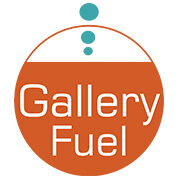The art gallery’s digital marketing landscape is changing rapidly, as are the expectations from your potential buyers for the kind of digital content they like to consume. It often feels like it’s almost impossible to keep on top of what makes sense for a gallery business marketing strategy in the environment in which you are working. You simply can not do it all – at least not really well.
Here, we will look at some of the more impactful elements in digital marketing today and what your gallery might consider prioritizing in your marketing efforts.
We will discuss influencer marketing, content curation, social media, and website user experiences so you can create a powerful strategy to accomplish your gallery’s marketing goals.
Influencer Marketing for Art Galleries
Influencer marketing has become the new buzzword in the marketing world. For an art gallery, it is not likely you’ll have a significant celebrity champion tweeting about your gallery regularly. However, you could have prominent people in your community who are happy clients be your gallery’s influencers. How could you offer incentives for them to do so?
- Discounts
- Use of gallery space for an event
- Reciprocal marketing
Consider putting a program in place that would be appropriate for your gallery’s potential influencers. Your program might focus on social media, referrals, or other content shared with their connections. Influencers with a variety of viewpoints work well.
Priorities for getting started
- Define a structured program for your gallery’s influencers and think carefully about how the process should work from start to finish.
- Identify every connection your art gallery has at its disposal that might be willing to share a consistent message on a pre-determined regularity.
- Establish realistic expectations for each influencer by discussing what, when, and where you prefer they use their network of connections to help promote your gallery.
- Make it an easy part of the post-sale process to get testimonials. Post them on your website and social media to help validate prospective buyers’ tastes and buying decisions.
Insightful and Entertaining Content Gets Attention
Content about art and the art market is so ubiquitous today that it can be overwhelming for art lovers to understand what work is good and valid. As an art expert with a digital presence, you must produce insightful and entertaining content regularly, including blog posts and images, and now video is becoming more dominant.
Most of the content on art collecting in major media streams covers the higher end of the art market. What’s an art lover without this kind of spending power to think?
Part of the challenge for art galleries operating in small markets is figuring out how to stand out to a distracted audience. It can also be difficult to continuously create new content to share that resonates with prospects more personally. It takes a bit of planning to get the messages on point.
Yet another challenge for galleries with a small staff is the lack of resources to create so much quality content. Today, you need to be a content-creating machine to see beneficial results.
Digital marketing messages are no longer brand-centric. Your digital content must also communicate from the art collector’s perspective. For example, how does what you offer contribute to your collector’s image of themselves and their values in life?
Creating curated content across all digital channels, with the unique point of view of the gallery, artists, and collectors, helps get prospects and buyers more emotionally invested in your gallery.
Adding a more human side to your digital landscape helps cultivate relationships with your cyber followers and can be entertaining. Giving people a glimpse of the people behind the gallery and the daily life of your artists and staff should be part of the story you tell.
Priorities for an art gallery’s content marketing strategy
- Start with a plan. Create a content calendar that includes your exhibition announcements (pre and post-show), blog posts, and newsletter topics.
- Add to your calendar messages promoting your services and highlighting the people that make the gallery possible (staff, partners/collaborators, even collectors)
- Now that your big messages are included on the calendar, you can plan social media posts and press releases.
The Website Rules in your Art Gallery’s Digital Marketing
An effective website is the most vital digital asset for your gallery business. It is the go-to place for prospective buyers, partners, and journalists. Today, we have fabulous industry-specific tools for building a gallery website with software that provides user-friendly interfaces, built-in contact, inventory, email management systems, and many more tools that make running a gallery more streamlined. Invest in the best system you can afford and fully utilize all its features.
Priorities for website development as a sales and marketing tool
- Prioritizing mobile for SEO is critical in the digital marketing landscape. Google initiated mobile-first indexing. As a result, your gallery’s index rankings will be given a lower priority if they are not mobile-responsive. A poor mobile experience could cause you to lose sales.
- Audit your website regularly to ensure it provides an excellent user experience. It must load quickly and be constantly updated with new content. Sometimes, fresh eyes can see things you don’t regarding your gallery’s website. You look at it every day. Gallery Fuel can help you audit all your digital marketing assets.
- Ensure your gallery’s website encourages discovery and supports the journey towards a sale with calls to action in crucial places. Also, make your site content-rich with videos, blog posts, and artwork images.
- Keep your site up-to-date. Remove anything that is no longer relevant that could make the gallery appear inactive or confuse visitors.
Managing your Gallery’s Social Media
Approach your social media strategy like you do when curating a show in the gallery. Your pages and feeds should tell many different stories from many different perspectives. They also need to encourage conversation and engagement in an authentic way.
Priorities for managing your gallery’s social media
- Review your goals for each platform your gallery uses. Don’t feel pressured to be everywhere. Instead, only focus on what gives you results.
- Regularly tracking social media insights will enable you to identify what you are doing well, what you can improve upon, and which platform to scrap.
- A social media calendar is a must. You can’t be really effective with your social media unless you have a plan that aligns with your goals and integrates with your other marketing efforts.
- Take advantage of as many features as the platforms offer. Their algorithms will reward you for it.
- Budget for advertising on your art gallery’s best social media channels.
- Include a clear call to action in posts to encourage engagement.
- Regularly research and experiment with hashtags. Going too broad or too narrow may not benefit your ability to be found by the right people.
To the point
Given the shrinking attention spans of people online, your presence in the digital landscape must be clear, informative, and entertaining. Remember that quality over quantity is a good strategy if you are tight on resources.
As you create content about your artists, exhibitions, and the gallery, look beyond a simply informative message. Art is most often an emotional purchase. Try to develop a sense of aspiration and paint a picture of the lifestyle your ideal buyer is trying to cultivate. Help them see how rewarding it is to live with the art you’re promoting and support your gallery artists in the process.
With a good understanding of the priorities in key areas of the digital marketing landscape, you can work more efficiently, reach more qualified art buyers, and see great results from your efforts.
You may also find these tools helpful.
 Strategy and Best Practices: Building an Art Gallery Marketing Foundation
Strategy and Best Practices: Building an Art Gallery Marketing Foundation
 Workbook: Content Marketing Annual Planner
Workbook: Content Marketing Annual Planner


Leave a Reply